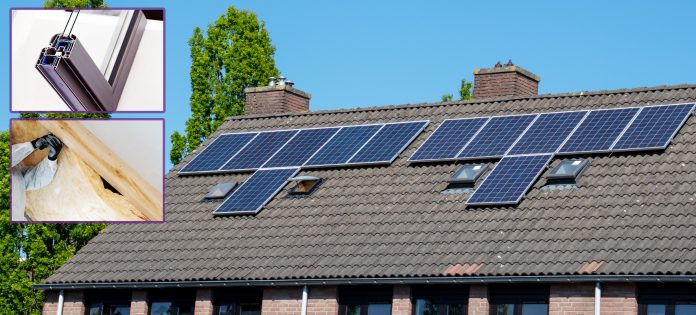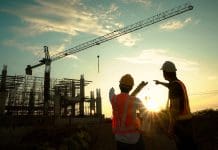To help development directors plot their strategy to net zero, Gary Cawley, director of North & Central England at CPC, sets out the essentials that every social housing client needs to know today and the first steps that CPC clients find most useful
Fabric First. It’s a term we’re all familiar with to a certain extent, but it’s becoming ever more prevalent and important as the UK hurtles towards its big, grand net zero target in 2050.
With this drive for energy efficiency, housing providers are facing a real juggling act between retrofitting existing stock and building new homes. On the new-build front, a Fabric First approach will help to meet the government’s expectations.
So how much do we really understand it, and what it means for our developments now and in the future?
It’s time to be honest here as there really is no sugar coating it – we need to get to grips with the concept, and what it means in reality, now.
2050 seems a long way off, and net zero feels like a stretch goal, but the regulations coming down the line in the next 12 months mean that we need to prepare. The government has finally responded to all of the submissions to its Future Homes Standard consultation, which means an update to Building Regulations Part L (Conservation of fuel and power – which sets standards for energy performance in buildings in England) is set to be published at the end of this year.
That means we now have little more than 12 to 15 months before this new Part L – which will mean homes have to produce 31% less CO2 emissions – is rubber-stamped.
What’s more, this is only an interim update to Part L. Even-more-stringent expectations will be introduced in 2025 when the Future Homes Standard is ratified, so we’d best prepare for that, too.
And while it might feel like we’ve been here before (Zero Carbon Homes Standard, anyone?) the global mood and the pressure governments are under to reduce their carbon footprint means the Future Homes Standard is as good as set in stone.
So what does this all mean for social homes and developers?
The government has said it is going to “radically improve the energy performance of new homes”, with those built to the 2025 standard expected to produce at least 75% less carbon than those built to current standards.
Taking a Fabric First approach, along with scaling up use of low-carbon technologies such as heat pumps, is part of the solution.
What is Fabric First?
As we know, Fabric First is about striving for the highest possible levels of energy efficiency in the fabric of buildings, in order that the need for heating systems is massively reduced.
While there has been a tendency in the past to go for more prominent solutions such as solar PV on roofs to reduce a building’s carbon footprint, Fabric First looks to improve its material construction to regulate temperature better.
This means considering issues such as improved insulation, eradicating thermal bridging and refining airtightness, meeting minimum standards for walls, floors and roofs to reduce heat loss.
But further than this, it also means we need to start thinking about a building as a whole, a complete system, rather than the sum of its parts. For example, how can a home be designed and constructed to take account of mechanical ventilation and heat recovery systems, without the need to bash holes in the walls and reduce its airtightness?
Depending on where you are in your Fabric First journey, here are five things you might want to consider:
- How well versed are you on different energy efficiency standards? There are many great courses out there, whatever level you’re at. One example, Passivhaus, covers issues such as high insulation standards, thermal bridging, air tightness and window quality, so provides a good view as to what the Fabric First approach entails.
- How could you start thinking more strategically about your developments? To meet the challenges ahead, you may need to consider what kind of housing you actually offer; wall thickness may have to be increased, so perhaps you’ll need to think about more terraced housing or apartments. Or perhaps housing shape will change – for example, an L-shaped bungalow with high surface area volume will be much less energy efficient than a two-storey house. Fabric First is all about achieving the maximum energy efficiency of a building, so what’s the best way to do that across your developments?
- Triple-glazing. This may be a quick win! Alongside the raft of other energy-efficient building facets outlined in the Future Homes Standard documentation, triple-glazing has been specifically identified by the Government. Can you start to incorporate it into your plans from now?
- Try to start having conversations with your contractors now. We need to get them thinking about how they are going to deliver in line with the Future Homes Standard, as it could fundamentally change how they construct. Within five years, we are going to see a massive step change, and we need to make sure the industry has the capability to meet the challenges that are coming down the road.
- As soon as you are ready, start educating the end user. Highly-energy-efficient homes, and all the tech that comes with them, are no longer confined to what we see on our TV screens in the guise of “grand designs” – they will soon be here for everyone. That means the way we all live in, use and heat our homes will change, so there’s a big educational piece that the whole industry has to deliver.
The government has said that it will set the Future Homes Standard in performance terms, providing minimum levels of primary energy and CO2 emissions, limiting fabric and building services standards without prescribing the technologies to be used.
That means developers can innovate, select and tailor the most practical and cost-effective solutions to specific developments while meeting the new standards.
You may therefore want to consider increasing your use of MMC to help solve the headaches presented by these new challenges.
The Future Homes Standard and the drive for net zero will fundamentally change the way we think about construction, and MMC solutions can help with issues such as increased wall thickness, improving control over thermal bridging and air tightness, and, to go back to my earlier point, designing homes as a whole system.
Our NH2 framework can help with this. You can read the procurement guide here.
Meanwhile, LHC is currently developing a housebuilding framework, which will take account of net zero and the Future Homes Standard, so make sure to keep your eyes peeled for that in the near future.
While this article has focused on new-build, there’s also the retrofit problem to consider, with a swathe of homes (around 75% of existing housing stock) having to be updated to meet Government expectations. There are two frameworks that can help – our N8C Energy Efficiency Consultancy Framework will help you to pick the most suitable route map for addressing your needs (N8C procurement guide), and the N8 Energy Efficiency Measures and Associated Works Framework provides suppliers that can deliver across 21 different measures, from insulation to heat pumps.














